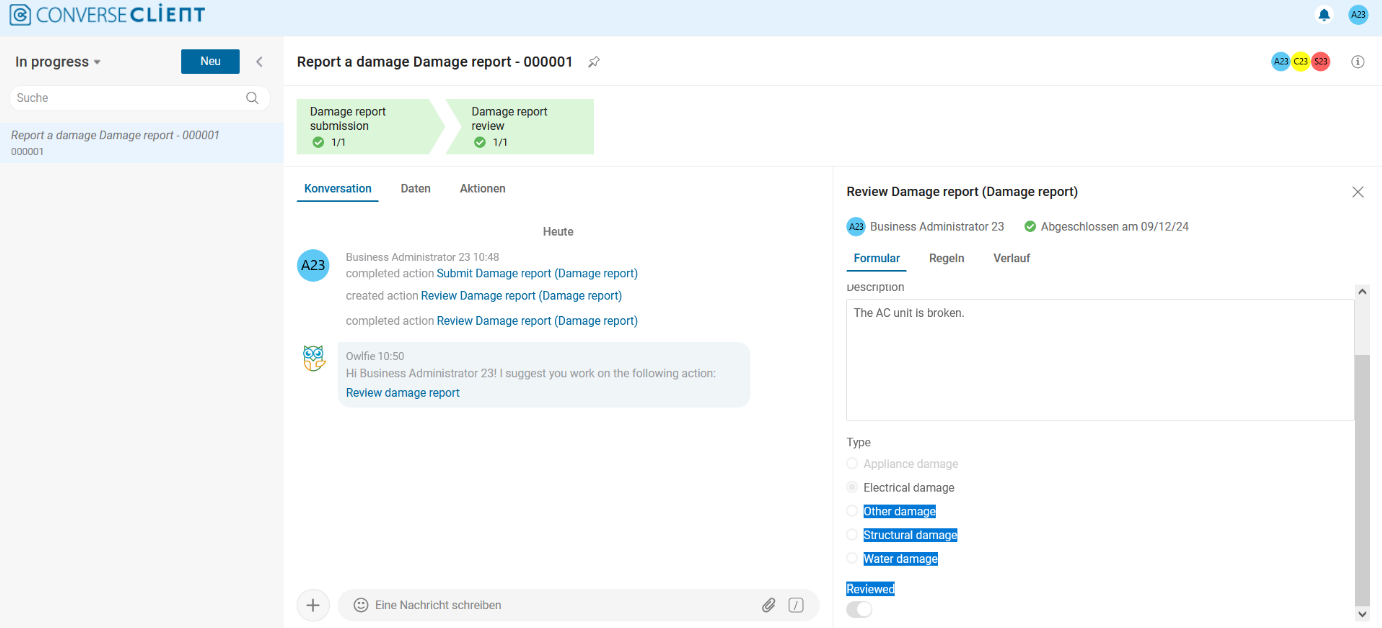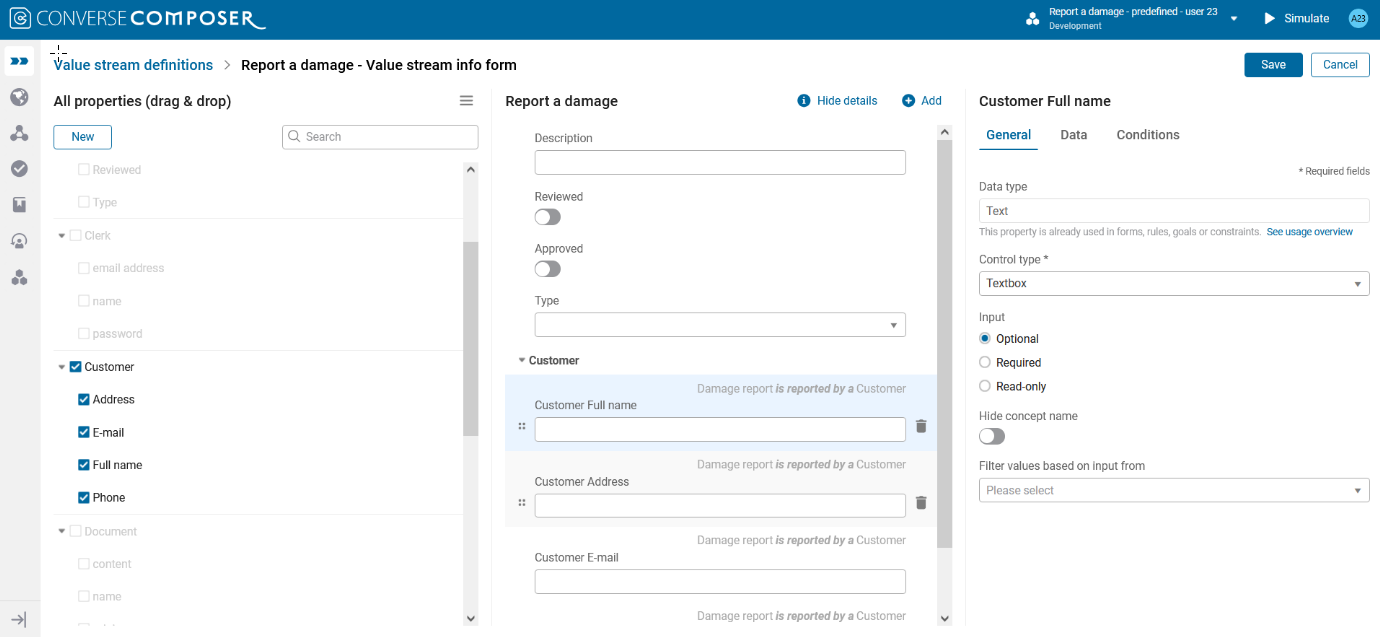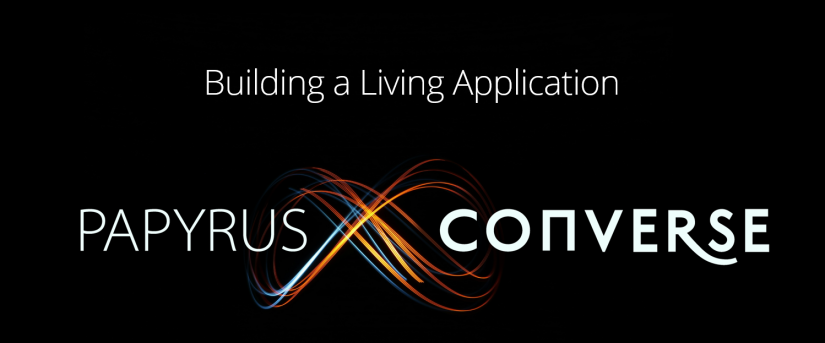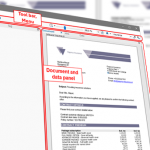Learning About Business Value Streams
In December 2024, ISIS Papyrus invited the graduating students of the TGM Technical Highschool in Vienna to a workshop at our headquarters about creating flexible business applications. The students had a basic knowledge of process management. The hands-on workshop allowed them to gain practical experience and learn best practices about how a typical company works and why it is so important to define flexible business value streams with the Adaptive Case Management methodology. So, what are the steps to success, and what makes Papyrus Converse so different from other process management systems? After two weeks of hands-on training on the Papyrus Converse Training Cloud, students were invited to share their experiences in a blog post competition. Read the winning blog post written by Batschana Gogoladze, student, TGM Vienna, Austria. Congratulations, Batschana!
Delivering business applications
In today’s world, people strive for digital solutions and inventions that reflect complex things in a simple form. ISIS Papyrus had the idea of realizing innovative software solutions specifically for companies. But what makes such a solution so different and attractive? This company has over 30 years of experience, develops market-leading solutions, has an international presence and can therefore be seen as a global expert in the fields of process optimization. With over 350 employees worldwide and the corporate language being English, Papyrus also manages to integrate in customer-centric environments.
What was the intention of this workshop?
It is easy to explain why we were there. ISIS Papyrus Software was kind enough to invite us to gain an insight into their new software, Papyrus Converse. It uses the adaptive case management methodology, which defines WHAT needs to be achieved and not HOW, like the declarative approach in app development. The software is used to design and execute unstructured business processes, whereby, the outcome is important and thus, in focus. By means of so-called value streams, composed from goals, actions and taking business rules into account, a flexible solution is designed instead of following a rather static process focused workflow. Thankfully, we were able to test this software for two weeks and carry out tasks, which allowed us to examine and experience the software.
Flexibility and adaptivity lead to success
The intention behind the use of the Papyrus Converse software is to make it easier for companies to define and adapt processes by non-IT people. This concept works faster, easier and more comprehensible for the business users, acting like citizen developers with a no-code design tool. On the one hand, this promotes the modelling of business processes in a flexible manner and, on the other, goes without predefined, static process flows.

Papyrus Converse comes with integrated artificial intelligence “Owlfie”, which is designed to provide the executing business staff with the needed support when working through a values stream: propose best next actions and allow a live chat with Owlfie, e.g. about what has happened so far in a case or ask specific questions about the contained documents. The product is a “no-code solution”, which means that it is very easy to use without any programming knowledge.
How are value streams defined?

A value stream presents a holistic process perspective that focuses on the value for the customer. Adaptive case management is used to identify key steps (phases) and when the goals of each phase are reached without considering the implementation details, which allows a process to be described as follows:
- Identification of requirements: The activities required to deliver the desired value to the customer are analysed.
- High-level abstraction: The value stream is represented at an abstract level, mainly by defining the milestones and goals of the whole process.
- Definition of the stages: Each stage represents an essential step in the business process, each of which carries goals and responsibilities.
- Description of actions and roles: The roles or groups involved in the process (e.g. Clerk, Supervisor, Business Administrator) and their tasks are specified by so-called Actions.
- Creation of an information model: Once the individual stages and actions have been defined, you define the business information which needs to be available for each action to be successfully completed, for example input fields in a form.
- Rules and goals: Specific business rules and goal rules are formulated for each stage and action to guarantee compliance with business regulations and laws.
Finally, I would like to thank ISIS Papyrus for the two-week trial period of the software and the visit to the company and hope that not only we have learned something, but also that the company will take our feedback for the Papyrus Converse software as an advantage for future cooperation between ISIS Papyrus and the TGM.

Papyrus Academy Manager at Papyrus Software
Vienna, Austria






